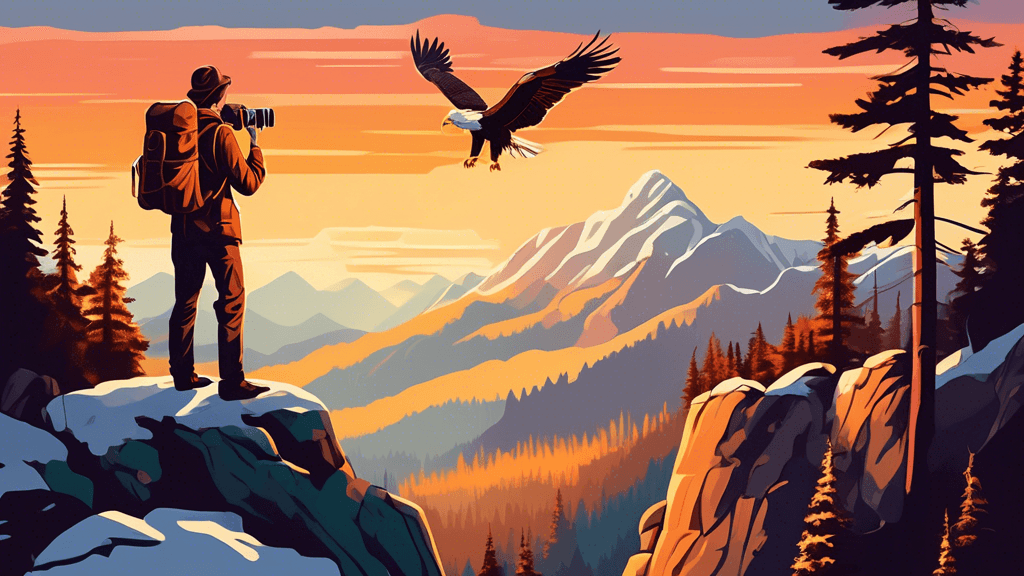
Capturing the Untamed: Exploring Wilderness Photography
Share
The Art and Challenge of Wilderness Photography
Wilderness photography captures the raw, uncharted aspects of nature, often bringing distant, pristine environments right before our eyes. But what urges photographers to venture into the wild, and what significance does this genre hold not only for art but for environmental awareness?
Understanding Wilderness Photography
At its core, wilderness photography is about documenting landscapes, wildlife, and ecosystems in their natural, untouched states. It involves photographers immersing themselves in environments that are often remote and rugged. This form of photography can serve as a powerful tool for conservation, inspiring both awe and a protective fervor in its audience. But, what does it take to truly capture the essence of the untamed?
The Challenges Faced by Wilderness Photographers
Wilderness photography is not without its challenges, which can be as unpredictable as the wild itself:
- Accessibility: Many of the most untouched places are remote and require significant effort and expertise to reach.
- Weather and Light Conditions: Working outdoors means being at the mercy of the weather, which can change rapidly and unpredictably in wild areas.
- Wildlife Interaction: Encountering wildlife requires knowledge of animal behavior to safely capture them on film without disturbing their natural activities.
- Environmental Responsibility: The principle of 'leave no trace' is paramount, ensuring that photographers do not impact the very scenes they aim to preserve.
Techniques in Capturing the Wild
To overcome these barriers, wilderness photographers must hone specific skills and techniques. Understanding the landscape, the behavior of light through different times of the day and seasons, and the habits of any potential wildlife subjects are all crucial. Long exposure techniques, aerial photography using drones, and mastering the golden and blue hours of daylight can significantly enhance the impact of the captured images.
The best wilderness photos are taken when one completely immerses themselves into the environment, notes John Smith, an acclaimed nature photographer. It's about understanding the rhythm of nature and predicting its next move.
Examples of Iconic Wilderness Photographs
Over the years, several photographs have captured the imagination of the public and played a role in environmental conservation efforts. Images such as Ansel Adams’ majestic views of Yosemite National Park or the compelling wildlife shots by Steve Winter have stirred public support for the protection of these natural habitats. These images share a common attribute: they evoke strong emotions through their depiction of the sheer beauty and fragility of untouched environments.
The Role of Wilderness Photography in Environmental Conservation
By bringing remote and protected areas into public view, wilderness photography has the unique ability to raise awareness and spark conservation efforts. It not only highlights the beauty of nature but also its ongoing plight. Photos can show the beauty of a place, but also the impact of human negligence, says Emily Green, a conservationist. Each image can advocate for a story that words alone cannot describe.
Connecting with a Broader Audience
With the advancement of digital platforms, photographers can now share their work with a global audience. Social media sites, photography blogs, and online art galleries offer platforms that were once unavailable. This democratization of viewership has increased not only the reach but also the impact of wilderness photography.
Final Thoughts and Call to Action
As we continue to witness unprecedented changes in our environment, wilderness photography’s role becomes more pertinent than ever. It’s a medium that transcends cultural and political boundaries, promoting a universal appreciation for our planet’s precious wild spaces. For those who feel inspired, consider supporting or engaging in wildlife conservation efforts. Whether you are a photographer or a lover of art, remember that every bit of support helps preserve the sublime beauty of the wilderness for future generations.
What can you do to support the protection of these magnificent places? Perhaps start by learning more about local conservation efforts or by supporting photographers who donate their proceeds to environmental causes. Your engagement can make a difference.





